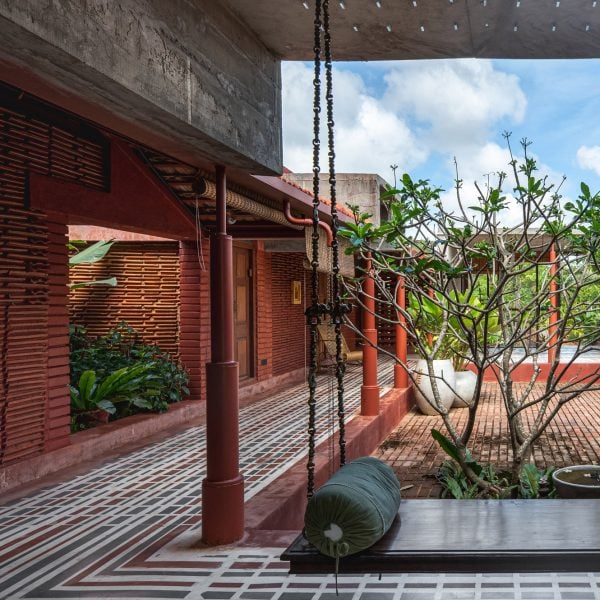Raw, tactile materials including clay tiles, earthenware pots and compressed earth bricks define this courtyard home near Chennai, India, designed by local practice Rain Studio.
Named Karai, the house was created as a weekend retreat for its clients on a coastal site surrounded by fields that lead directly onto a nearby beach in the coastal town of Kuvathur.
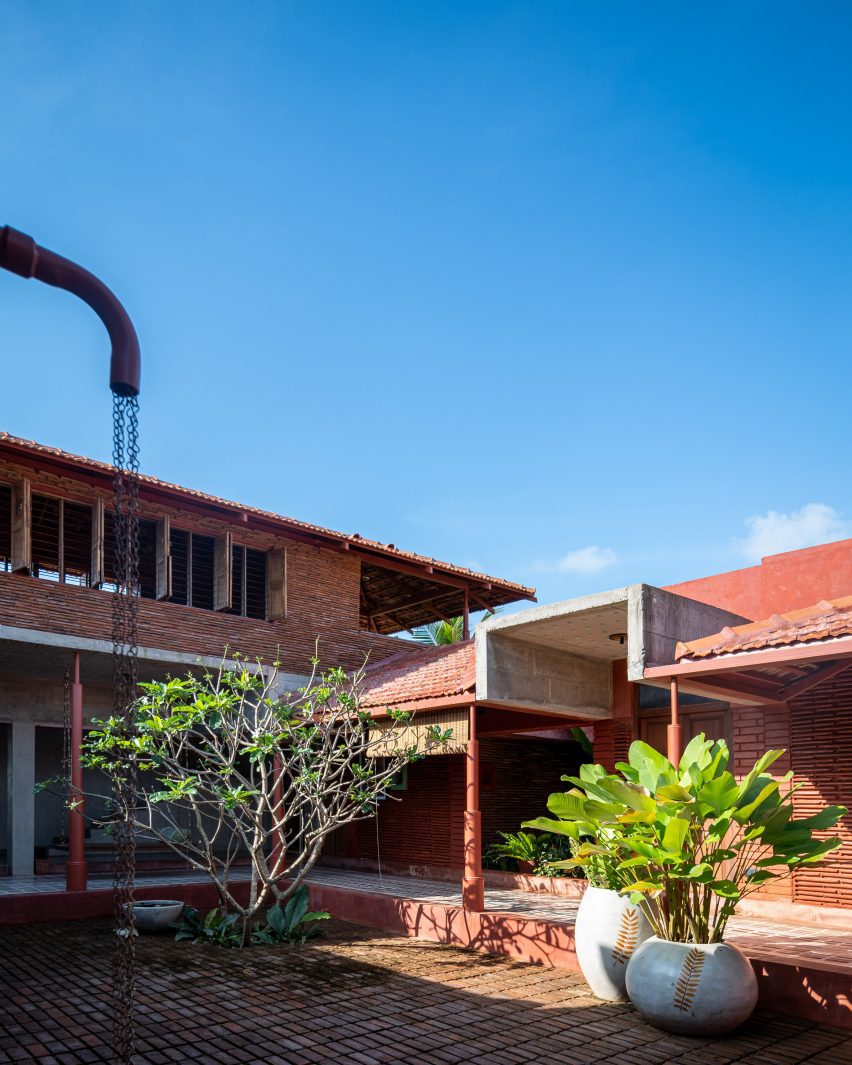
“Sequestered from civilisation, the lashing of the waves and the persistent stillness prevalent on the site was an inspiration dictating the design ideal from the early stages,” explained Rain Studio.
“Set within proximity to the sea, the living unit was envisaged to remain hidden within dense verdure and framed by reflection pools.”
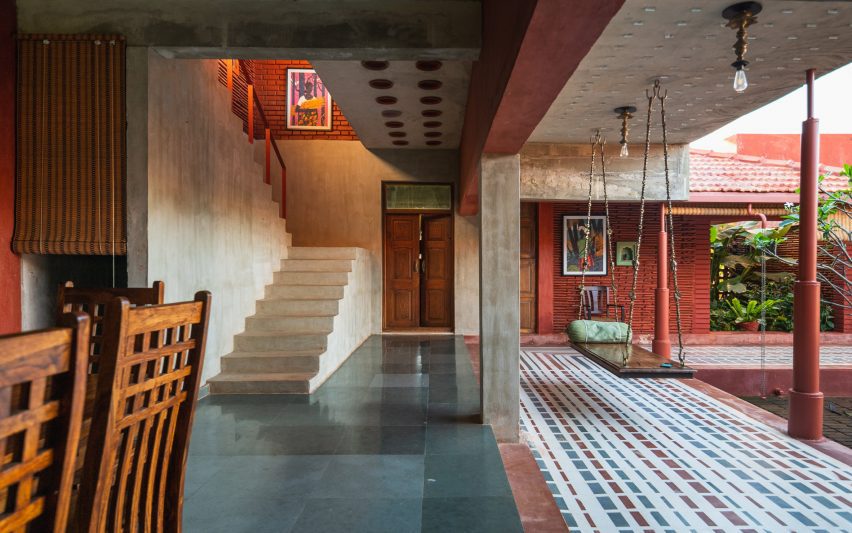
Aiming to create a secluded atmosphere for the home, Rain Studio drew on the traditional South India naalukettu – a homestead building with four halls arranged around a central courtyard.
The structure was built from a combination of reclaimed and regional materials, which were left raw wherever possible.
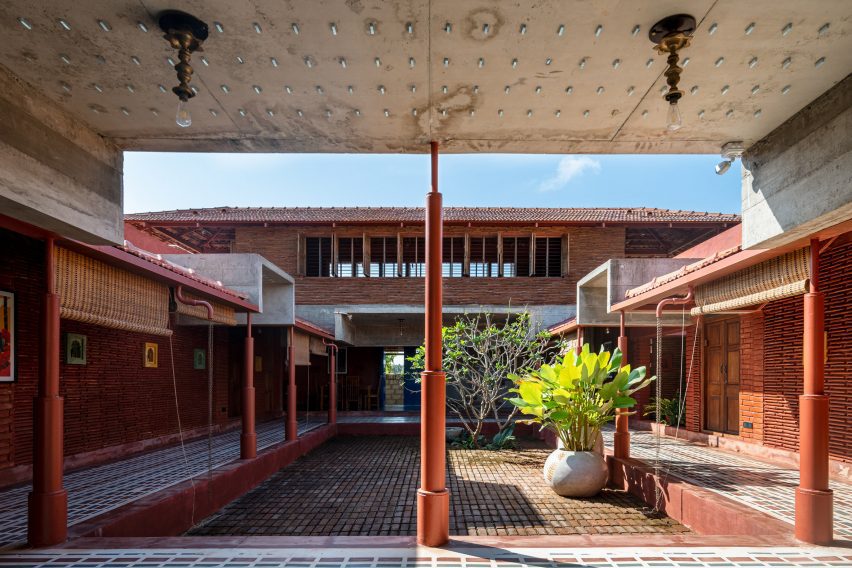
A brick-paved courtyard sits at the centre of the home, hugged by a veranda sheltered by concrete and tile roofs supported by stepped steel columns that double as drainpipes.
Bedrooms and a kitchen diner surround the courtyard on the ground floor, while to the south a staircase leads up to a first floor lounge, which is elevated to capture views out across the sea.
The concept of reinterpreting traditional structures was carried through into Karai’s finishes, with reclaimed and regional materials used throughout.
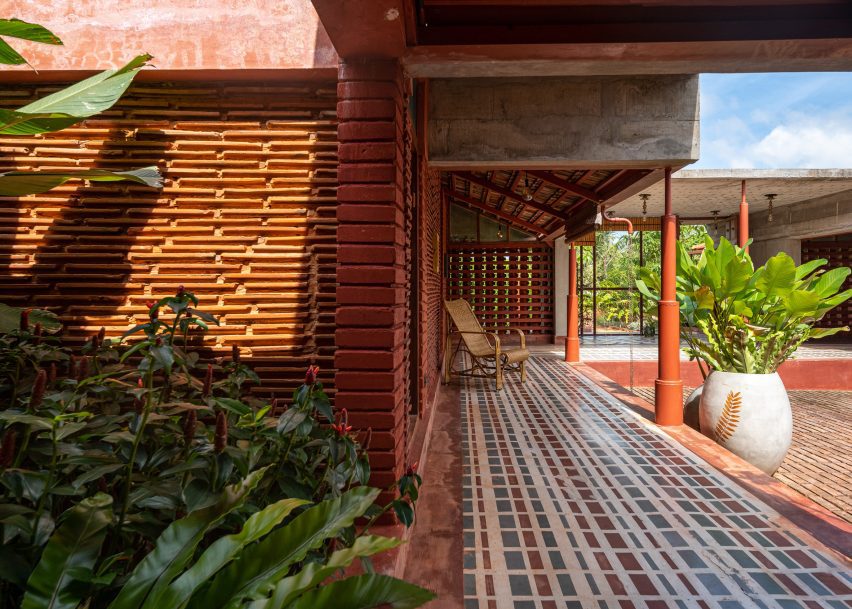
The walls of the home were built from a mixture of deep red brick, stacked Mangalore tiles and compressed earth bricks, with wooden doors made from reclaimed window shutters and flooring made from pieces of discarded stone.
In areas of the concrete ceilings, shards of toughened glass have been inlaid to reflect small areas of light, while the traditional technique of using earthenware pots to aid passive cooling has also been used.
“This weekend home was conceived as a simple experiment with techniques that felt native yet contemporary to the region,” explained the studio.
“Tessellations of pre-used Mangalore tiles sandwiched together by mud mortar form a majority of the walls, creating earthy volumes that contrast the green backdrop.”

